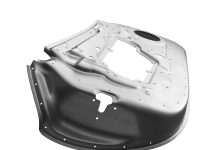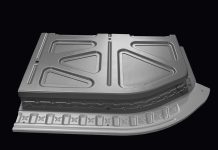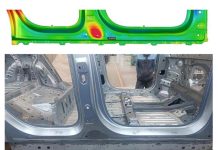Understanding Principles of Improvement – a KAIZEN Story
One of the main strengths of AutoForm software is its performance. Unlike more generic simulation software, the AutoForm software does one thing, right and fast. Consequently, performance is something we take very seriously at AutoForm. For this reason, a dedicated software performance engineering team within development ensures that the software performance is always on par or better between releases and in accordance with user requirements. We are monitoring several performance KPIs: time and memory consumption, file size, and others.

The software performance engineering at AutoForm is supported by three pillars:
- Automated performance tests: where we are monitoring any shifts in performance of monitored actions while development is taking place. Our automotive customers would be surprised how Statistical Process Control principles from production can be applied to software as well! We are using control charts and statistical process rules to monitor the performance of critical actions and aspects of the software while it is being developed. This way, we make sure that while developers modify the code, any adverse effects are intercepted as early as possible. Then, we address these issues with the developers, either to bring performance back to the normal or to justify the shift in performance. Usually the tests in the automated platform stem from the other two pillars.
- User perceived performance experience: as part of the user experience, performance can be critical for the user workflows. It is not always so that performance expectations from stakeholders (mainly internal and external users) are objectively justified. It is common that users expect something to be faster based on their experiences with other software, on their workflow or just their gut feeling. We are always looking at the involved algorithms to find ways to streamline them and optimize them for the case. But this is not always possible, so based on special profiling tools we attempt to see how changing the order of things, parallelizing or deferring could help to satisfy our users. More often than not, thanks to our experience and technology, we are able to achieve this.
- Continuous improvement: through our work with user perceived performance, we often identify technical, design or architectural improvements that we can do, but these would involve the interaction between several development teams, as well as input from technical product managers and development managers. The time span for these tasks is long and these affect several areas of the software but the results are likely overwhelming in terms of performance improvement.
This balanced approach to performance allows us to ensure performance stability and to meet user expectations. We can make anything between minor and substantial modifications to algorithms, designs, or entire workflows and see the impact almost immediately in several areas. It should be considered that for complex software like AutoForm, it is practically impossible to test all possible paths through the software as these are innumerable and often depend on particular parts and processes. It is therefore imperative to receive feedback from internal and external users on what works well for them and what not.
This process and the rigor applied bear much fruit. With AutoForm R8, we are proud to deliver significant performance improvements in several areas. Just consider, for example, that our AutoForm-Compensator is now 70% faster than its previous versions, while at the same time requiring less memory. AutoForm-DieDesigner has also been greatly improved. It’s now 50% faster on average. AutoForm-Sigma is now faster than ever at resolving issues (with a small increase in memory requirements). Files are opening faster in AutoForm R8 and we have put particular effort to improve the case of progressive dies where a large amount of tool information needs to be restored.
With all these and many more performance improvements, we are confident that the user experience has improved significantly for R8. But that’s not the end! Continuous improvement will not stop and new products are in the pipeline for testing and optimization. Our eagerness to deliver even better software every time is endless.
Reader’s don’t forget to sign up to our blog by email! You’ll get zero marketing emails and only 100% blog post updates!













